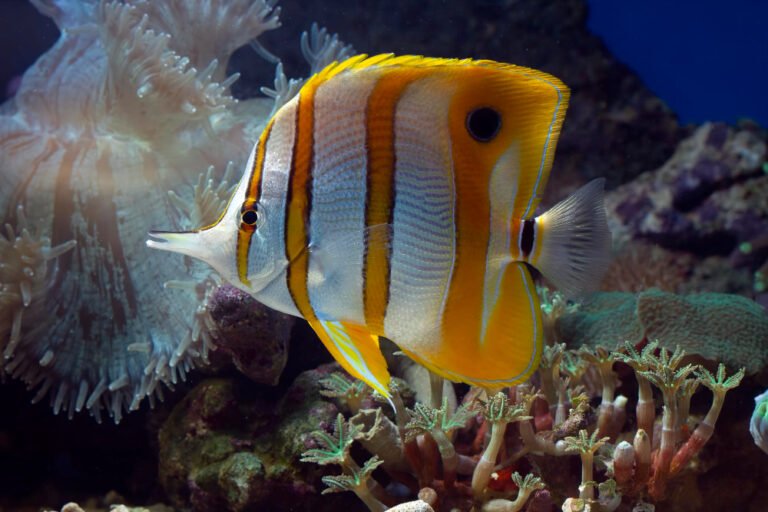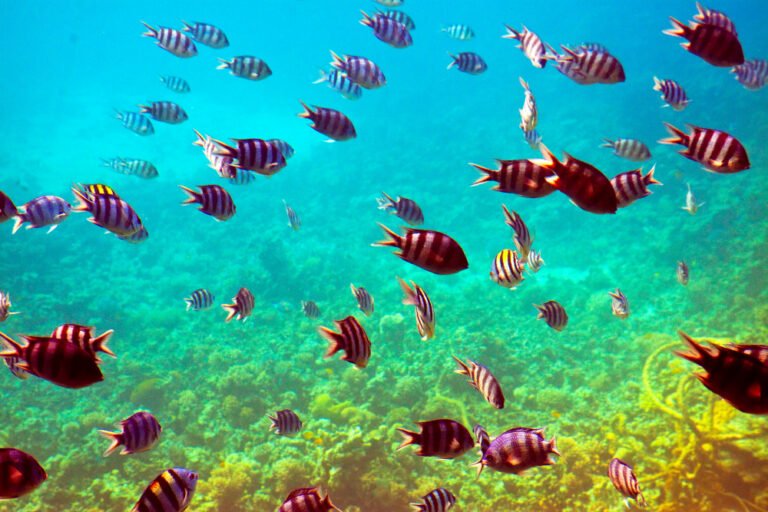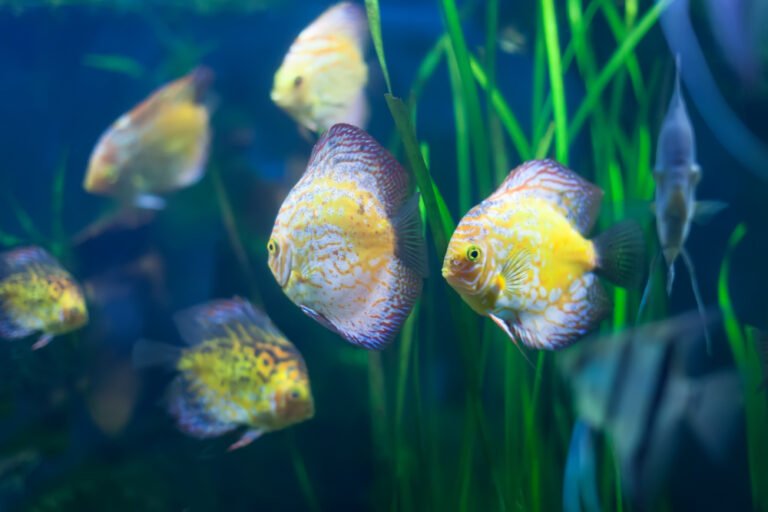The Untold Secrets Behind Successful Ornamental Fish Farming
Ornamental fish farming can be a pretty rewarding venture—if you get a handle on the basics. The biggest secret? Creating a balanced environment with good water, enough space, and picking the right fish species for your setup.
When you nail those fundamentals, fish just seem to do better, and your farm’s more likely to be both healthy and profitable.

Building a successful ornamental fish farm means you’ve got to watch water quality and feeding routines closely. Picking fish that suit your climate and what people actually want to buy is also key.
Plan your farm’s infrastructure with care, and don’t slack on maintenance—it’s the best way to dodge disease and keep things growing strong.
Knowing how to care for your fish, choosing species that fit, and understanding the market really does boost your odds of turning a hobby into a legit business.
Stick with sustainable, ethical practices. That way, you’re protecting your investment and the environment—which, honestly, feels pretty good in the long run.
What You’ll Learn?
- Keep water clean and give fish enough space to grow well.
- Pick species that fit your environment and what buyers want.
- Plan your farm and stick to solid care routines.
Core Principles of Ornamental Fish Farming
Success in ornamental fish farming really comes down to managing the environment and picking the right species. You’ve got to keep water quality, space, and feeding in balance.
Understanding Aquaculture Systems
Most ornamental fish farms use recirculating aquaculture systems (RAS). These recycle water, which cuts waste and keeps things cleaner.
You’ll need tanks or ponds that keep temperature, oxygen, and water chemistry steady. In RAS, filters pull out the bad stuff, so you can raise fish in smaller spaces and have more control.
You’ll want to keep a close eye on water parameters like pH, ammonia, nitrite, and nitrate. It’s not glamorous, but it matters.
The system you choose depends on your scale and fish. Glass aquariums are fine for small setups, but bigger farms might go for concrete tanks or ponds. Whatever you use, water quality is non-negotiable.
Benefits of Ornamental Fish Farming
There are some real upsides if you manage things well.
- Income potential: Selling colorful or rare fish can be pretty profitable—especially if you find a niche.
- Pet market demand: There are always hobbyists looking for healthy, pretty fish.
- Space efficiency: With RAS or tanks, you can raise a lot of species in not much room.
- Low feed costs: Ornamental fish usually don’t eat as much as food fish.
- Environmental impact: If you manage water well, it’s a pretty sustainable gig.
Raising your own fish also means you control quality and supply, and you’re not contributing to overfishing wild populations.
Challenges in Ornamental Fish Production
Of course, there are headaches to watch for.
- Water quality: Bad water stresses fish and spreads disease. You really have to test often.
- Disease control: Illness can get out of hand fast in small systems. Quarantine new arrivals and treat problems quickly.
- Species compatibility: Some fish just don’t get along. Grouping species takes planning.
- Breeding difficulties: Not all fish breed easily in tanks. You’ll need to study up on each species.
- Financial risks: Setup costs, disease, or a weak market can all sting.
You’ve got to stay on your toes and tweak your approach as needed. It’s a lot, but good management really does help.
Check out more about aquaculture systems at Ornamental Fish Farming For Beginners.
Key Ornamental Fish Species
Choosing the right species is pretty much make-or-break for ornamental fish farming. Think about what’s popular, how easy they are to care for, and what buyers actually want.Some fish are just always in demand, whether for commercial sales or home tanks.

Popular Decorative Fish for Farming
Certain species just never go out of style. Neon tetras and cardinal tetras are small, bright, and breed pretty easily—solid picks.
Goldfish and koi carp are showy and get big, making them favorites for outdoor ponds.
There’s also guppies and angelfish. Guppies are prolific and colorful, while angelfish have that elegant look people love.
Don’t forget Siamese fighting fish—their flashy fins and feisty behavior always get attention at the shop.
Selecting Species for Commercial Viability
If you’re going commercial, focus on fish that are tough and breed easily. Neon tetras, guppies, goldfish, and koi carp all check those boxes.
Market demand matters. Koi carp can fetch high prices, especially for outdoor setups. Neon tetras and guppies are great for folks wanting to fill home aquariums without breaking the bank.
Fast breeders like guppies help you grow your stock quickly. If a species is tricky to care for or slow to breed, maybe wait until you’ve got more experience.
Species Selection for Home Aquariums
If your customers are mostly home aquarium owners, pick fish that do well indoors and look great. Neon tetras, cardinal tetras, and angelfish are all solid for peaceful, colorful community tanks.
If someone’s up for a challenge, cichlids can be impressive, but they need more space and attention since they can be territorial.
Goldfish are a classic, but they really need bigger tanks or ponds as they grow. Make sure to educate folks about tank size and which fish get along.
Mixing hardy and colorful fish keeps home tanks lively and fun to look at.
Fish Farming Infrastructure and Setup
Getting your farm set up takes some real planning around space, water, and equipment. The right setup makes caring for your fish way easier.Pay attention to tank layout, water quality, and gear. It all adds up to a more stable environment.
Designing Efficient Aquaculture Units
Go for a layout that uses space well and makes it easy to feed and clean. RAS is great because it recycles water and keeps things steady.
For home setups, pick tanks that fit your space but still give fish room to swim. Lots of smaller tanks can help separate species and avoid crowding.
Keep tanks where you can control temperature and light. Fish get stressed if things swing too much.
Use sturdy, safe materials for tanks and stands. Covers help keep fish from jumping out, and good organization of plumbing and wires keeps accidents at bay.
Water Quality and Filtration Essentials
Water quality is everything. Test for ammonia, nitrite, nitrate, pH, and temperature on the regular.
Mechanical filters catch solid waste, biological filters let good bacteria break down toxins, and chemical filters handle odors and pigments. In RAS, solid filtration is a must for water reuse.
Don’t forget aeration—air pumps or diffusers make sure fish get enough oxygen. Even with filters, you’ll probably need to do water changes sometimes.
Equipment for Optimal Fish Health
Keep water temperature steady with heaters or chillers, depending on your species. Lighting should mimic natural cycles but not overheat the tanks.
Automatic feeders can help with consistent feeding, which keeps stress down and growth up. Use water test kits and digital monitors to catch issues early.
Have backup power ready for pumps and filters—blackouts happen, and fish can’t wait. Stay on top of equipment maintenance so nothing fails when you need it most.
Investing in good infrastructure makes your life easier and your fish healthier. For more setup tips, check out this guide to ornamental fish farming.
Best Practices for Fish Health and Growth
Keeping ornamental fish healthy and colorful really comes down to how you care for them. That means the right food, careful breeding, and keeping disease at bay with solid hygiene and monitoring.

Feeding and Nutrition for Ornamental Fish
Feed your fish a balanced diet that fits their species. Guppies and neon tetras do well on quality flake or pellet food with plenty of protein and vitamins.
Cichlids need more protein—think frozen or live stuff like brine shrimp. Feed small amounts a couple times a day; overfeeding just messes up your water.
Mix up food types to keep fish interested and healthy. Watch how they eat—if they’re off their food or you see leftovers floating, something might be up with water or health.
Young fish (fry) need more frequent, smaller meals, so adjust as they grow.
Breeding Techniques and Management
Breeding goes better with clean, stable water and the right setup. Separate breeding tanks help lower stress and keep eggs safe from hungry adults.
Guppies like water around 24-26°C and plenty of plants for hiding. Neon tetras prefer dimmer light, soft acidic water, and about 23°C. Cichlids need some rocks and a bit warmer water, usually 25-28°C.
Only breed healthy fish—skip any showing signs of illness. Pull adults out after spawning so they don’t eat the eggs. Check on eggs often to make sure they’re developing okay.
Disease Prevention and Biosecurity
Keep water clean with regular changes and good filtration to avoid most diseases. Quarantine any new fish for at least two weeks before adding them to your main tanks.
Look out for signs like white spots, sluggishness, or weird swimming. Catching issues early makes them way easier to manage.
Disinfect gear after each use and don’t mix species that carry different bugs. Stable water means less stress, and less stress means healthier fish.
Want more info on keeping fish healthy? There’s a detailed health management guide for ornamental fish farming worth a look.
Market Strategies and Business Considerations
Jumping into ornamental fish farming? First, you’ve gotta find your market niche, wrap your head around export rules, and build a brand that actually stands out. It sounds simple, but there’s a lot more to it than just raising pretty fish.
Identifying Profitable Market Niches
Picking the right niche is honestly half the battle. Maybe you’re eyeing hobbyists, aquarium shops, interior designers, or even serious collectors who want something nobody else has.
Hobbyists usually hunt for rare or super colorful fish to show off at home. Pet shops just want reliable suppliers and healthy fish—nobody wants to deal with sick stock.
Interior designers? They’re looking for those high-end, custom aquarium setups that make a statement. There’s always a new trend popping up, like eco-friendly fish or species you don’t see every day.
Do some digging—see what your competitors are missing. Maybe there’s a gap you can fill. Demographic and psychographic data can help you zero in on who’s most likely to buy from you, but don’t get too bogged down in the numbers.
Export and Trade Regulations
If you’re thinking about going international, you really need to get familiar with the maze of export rules for live fish. Every country seems to have its own set of hoops to jump through, from permits to health certificates and quarantine stuff.
Usually, you’ll need licenses from your local fishery or agriculture department. Make sure your fish meet all the health and quality standards, or you might find your shipments delayed—or worse, turned away.
Some species are totally off-limits for export to protect local ecosystems. A customs broker who actually knows live animal shipments can save you a lot of headaches (and probably some money, too).
Branding and Marketing Approaches
If you want your fish farm to get noticed, you’ll need a brand that actually means something. Maybe you specialize in rare breeds, eco-friendly practices, or just killer customer service—whatever it is, let people know.
Ornamental fish are all about the visuals, so don’t skimp on photos and videos. Instagram and Pinterest are your friends here—people love scrolling through eye-catching tanks.
Keep your messaging clear and let folks know what you stand for. A few real customer testimonials can go a long way in building trust.
Mix up your marketing—SEO, social media, and the usual online stuff, but don’t forget about trade shows or teaming up with pet stores. There’s no single magic bullet, but a mix usually works best.
If you want to get into the weeds, here’s a solid guide on marketing plans for ornamental fish farming businesses.
Sustainable and Ethical Ornamental Fish Farming
Keeping the ornamental fish industry healthy means thinking beyond just profits. You’ve got to protect natural habitats, breed responsibly, and treat your fish well. That’s good for the business, the environment, and, honestly, your own peace of mind.
Conservation and Biodiversity Efforts
Wild fish populations can’t handle endless harvesting. Cutting back on capturing from the wild helps keep ecosystems in balance and preserves biodiversity.
Captive breeding is a solid way to take the pressure off wild stocks. Supporting programs that keep an eye on wild populations and their habitats is just smart business.
Habitat restoration and community-based management? Those are the kinds of sustainable practices that actually make a difference. Investing in these efforts isn’t just good PR—it’s the right thing to do if you want ornamental fish farming to stick around.
Sustainable Breeding and Harvesting
When it comes to breeding, focus on healthy fish and low impact. Selective breeding for disease resistance and adaptability really pays off in the long run.
Keep your water clean and waste down with solid filtration and feeding routines. Pollution’s a killer, literally, and nobody wants that.
Don’t overharvest—set some limits and rotate your stock. That way, you’re not wiping out your breeding populations or messing with genetics.
Techniques like using probiotics or synbiotics in feed can help your fish grow better and stay healthier. It’s a win for sustainable production and for your bottom line, too.
Ethical Animal Welfare Standards
You really need to treat ornamental fish with care if you want to cut down on stress and illness. That means making sure they’ve got enough space in their tanks and the water stays clean.
Don’t forget about proper nutrition—it’s basic, but so many people still overlook it. When you move or transport fish, handle them gently to avoid injuries.
Overcrowding? Not a good idea. It just ramps up aggression and spreads disease faster than you’d think.
Keep an eye on your fish. If they’re acting weird or look sick, jump on it fast. And honestly, training your staff on fish welfare goes a long way for everyone involved.
If you’re curious about the science behind all this, check out this research on Sustainable Ornamental Fish Aquaculture. There’s some interesting stuff about microbial feed additives and how they can help fish health.
Frequently Asked Questions
1. Is ornamental fish farming profitable?
2. What are the most popular fish species for ornamental farming?
3. What kind of setup do I need to start ornamental fish farming?
4. How important is water quality in ornamental fish farming?
5. Can I farm ornamental fish at home?
6. What are the biggest challenges in ornamental fish farming?
7. How do I prevent diseases in my fish farm?
8. How can I market ornamental fish effectively?
9. Is ornamental fish farming environmentally sustainable?
What is Freelancing? A Gateway to Freedom and Opportunity
Freelancing means doing specific work for clients without signing up for a full-time job. You work for yourself, get paid per project or hour, and call the shots.
This style of working has become pretty popular—over 64 million....
Read more